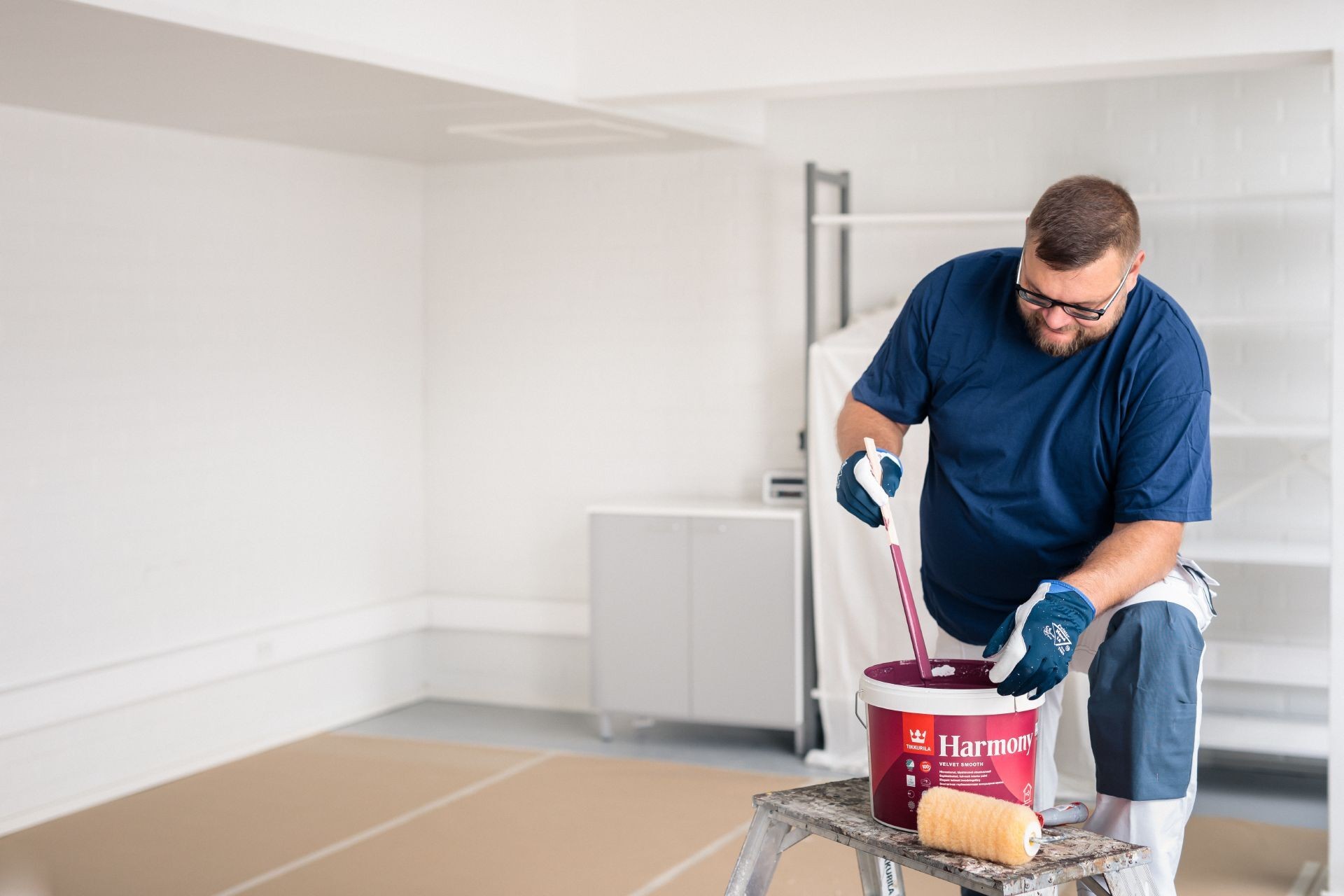You’re visiting Tikkurila website from United Kingdom. Would you like to visit the local UK site?
What happens to indoor air if I open a can of paint
Learn the basics of how a choice of paint can have an effect to indoor air quality.

People are increasingly aware of the factors that impact human wellbeing, and indoor air quality is of utmost importance to our health. Professional painters are in an ideal position to make a difference with their choices based on how well they know the products they use. So, what happens to indoor air quality when you open a can of paint? Here are the basics you will want to consider.

The larger the painted surface, the more emission
Opening a can of paint as such does not really affect air quality in a room. Emission occurs when you spread the paint on a surface. The effect depends on the size of the surface, whether you are painting one door handle or an entire wall.
Paint basically consists of two parts: the ingredients that form the final coating and the ingredients that evaporate when paint dries. With standardized water-borne low-emission interior paints, at best the only solvent to evaporate is water. In addition, interior paints contain small amounts of coating auxiliary agents.
Studying the safety data sheet is key
Sustainable, green buildings are becoming the new normal, and products that ensure a good indoor climate are increasingly important. Whichever the product in use – particularly when using products that contain other solvents than water, such as white spirit, ammonia or formaldehyde – studying the safety data sheet is key. In the data sheet, you’ll find all necessary information regarding your own protection and the required dry time and ventilation. The European Union has a lengthy list of VOC (Volatile Organic Compound) requirements which the approved products must meet. The European Commission is working on a standard for EU-LCI (Lowest Concentration of Interest) values, a concept developed by the European collaborative action on indoor air quality and its impact on man. Paint products are approved in laboratory tests that measure organic compounds, for example, and standards and audits are set for raw materials and biocide suppliers, too.

The perception of odor is subjective
Odor is one of the criteria used for evaluating indoor air quality. Wet paint smells because its solvents evaporate into air from the painted surface. Water-borne interior paints are low-odor but not completely odorless.
A solvent-borne paint may produce a stronger odor, but various tests have shown that the perception of odor is highly subjective and does not reflect the paint’s toxic impact. In paint product development, odor emissions are evaluated by a group of experts whose opinions may vary a great deal during testing. The best way to avoid odor nuisance is to follow the instructions given in the safety data sheet of the product to be used.

Sustainable low-emission paints are essential to better indoor air
The requirements for building products have increased over the years. In addition to product contents, the environmental impact of manufacturing is under scrutiny.
The responsible paint manufacturer must use carefully selected raw materials and reliable suppliers to ensure that interior products meet today’s demanding quality and sustainability requirements. Various national classifications provide the target values, design guidance and product requirements for a healthy indoor environment, but the manufacturer must yet monitor developments and updates in classification criteria and legislation and only collaborate with responsible partners who take quality and environmental standards seriously. Appropriately classified building materials emit very low levels of compounds into the atmosphere. The quality criteria are constantly being tightened, and there are new requirements for packaging materials, too.




